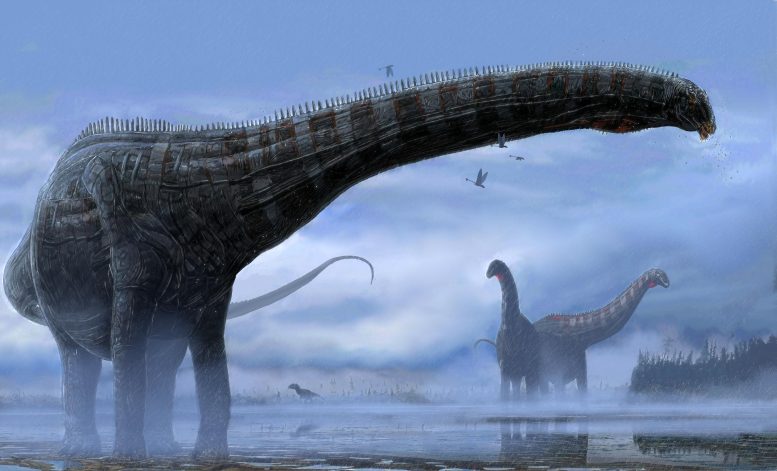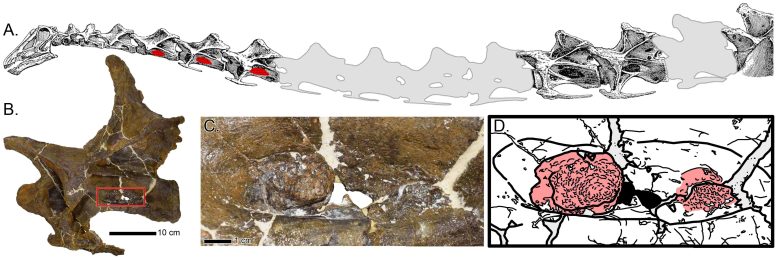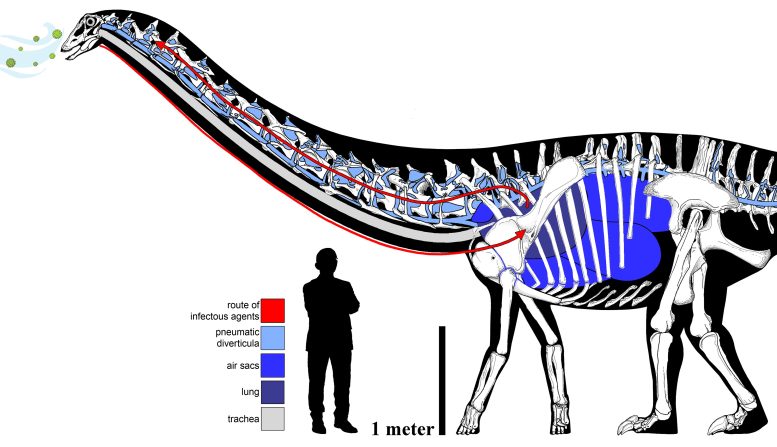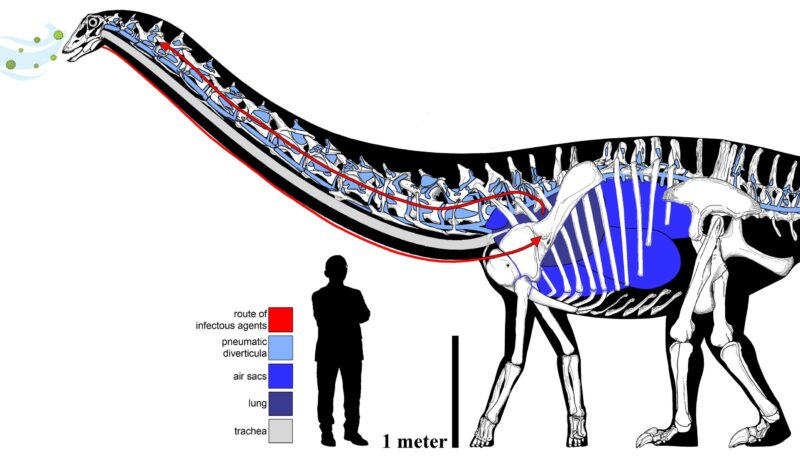
Rétablissement hypothétique de la vie de MOR 7029. Notez que la maladie pulmonaire infectant cet animal n’aurait pas été extérieurement évidente, mais les symptômes extérieurs probables de type pneumonie auraient inclus la toux, une respiration laborieuse, un écoulement nasal, de la fièvre et une perte de poids, entre autres. Crédit : Woodruff, et al. (2022) et Corbin Rainbolt.
Les restes fossilisés d’un jeune diplodocide – un grand sauropode herbivore au long cou – pourraient fournir la première preuve d’une infection respiratoire chez un dinosaure, selon une étude publiée dans Scientific Reports. Ces découvertes améliorent notre compréhension des maladies qui affectaient les dinosaures.

Croissance osseuse anormale chez MOR 7029. (A) Carte schématique du cou de Diplodocus, avec la croissance osseuse anormale indiquée en rouge. (B) Vertèbre du cou de MOR 7029 avec une boîte rouge soulignant la structure anormale ; gros plan en (C) avec dessin interprétatif en (D) (structure anormale en rouge). Crédit : Woodruff, et al.
Le spécimen, connu sous le nom de MOR 7029, a été découvert en 1990 dans le sud-ouest du Montana, aux États-Unis, et date du Jurassic Period (approximately 150 million years ago). Cary Woodruff and colleagues examined three of the bones from MOR 7029’s neck and identified bony protrusions that had an unusual and irregular shape and texture. These protrusions were located in an area of each bone where they would have been attached to air-filled structures, known as air sacs. These air sacs would have connected to MOR 7029’s lungs and formed part of the dinosaur’s respiratory system. CT imaging of the irregular protrusions revealed that they were made of abnormal bone that most likely formed in response to an infection.

The elaborate and circuitous pulmonary complex of the sauropod, with the hypothetical route of infectious pathway in MOR 7029. Human scale bar is the profile of a man standing 170cm tall. Credit: Woodruff, et al., and Francisco Bruñén Alfaro
Based on the location of the abnormal bony protrusions, the researchers suggest that they formed in response to an infection in MOR 7029’s air sacs, which then spread into its neck bones. The authors speculate that this could have been caused by a fungal infection similar to aspergillosis, a common respiratory illness that affects birds and reptiles and can lead to bone infections. They suggest that if MOR 7029 had been infected with aspergillosis, it may have experienced flu or pneumonia-like symptoms such as weight loss, coughing, fever, and breathing difficulties. As aspergillosis can be fatal in birds if untreated, MOR 7029 could have ultimately died as a result of this infection, they add.
For more on this discovery, see Sauro-Throat! First Evidence Discovered Indicating Respiratory Infection in a Dinosaur.
Reference: “The first occurrence of an avian-style respiratory infection in a non-avian dinosaur” by D. Cary Woodruff, Ewan D. S. Wolff, Mathew J. Wedel, Sophie Dennison and Lawrence M. Witmer, 10 February 2022, Scientific Reports.
DOI: 10.1038/s41598-022-05761-3



